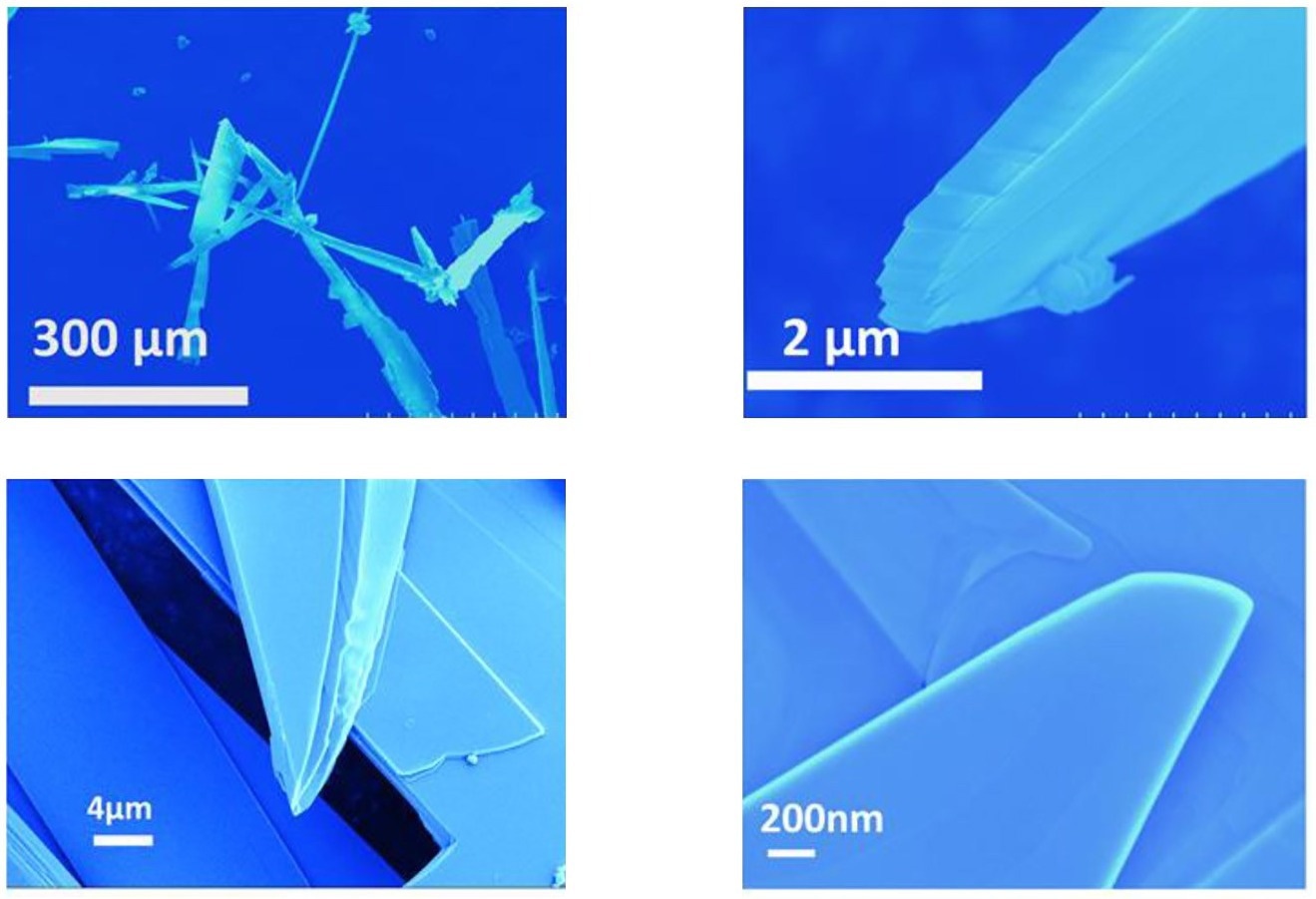Two-dimensional materials like graphene display alluring properties like extraordinary strength, superconductivity, and exotic quantum phenomena.

Electron microscope image of the hair-shaped structures, also known as “whiskers”, which contain the thin molybdenene layers. Image Credit: Sahu, T.K., Kumar, N., Chahal, S. et al., Nature Nanotechnology
Researchers at Forschungszentrum Jülich, together with collaborators from the Indian Institute of Technology in Patna and the Australian University of Newcastle, have made a unique material of this kind that displays a metallic character. It comprises just one atomic layer of molybdenum atoms and is also described as “molybdenene”.
The researchers were successful in generating a thin sheet of the metal molybdenum, which is only one atomic layer thick. Hence, the new material is similarly thin as graphene, likely the best-known 2D material.
The latter comprises carbon and was first isolated in 2004. The breakthrough garnered great attention since graphene conducts electricity and heat far better compared to copper and is a hundred times more stable than steel.
Simultaneously, it possesses remarkable lightweight and flexibility. Because of its unique 2D structure, graphene also demonstrates some unconventional electromagnetic properties that have the potential to drive revolutionary advancements in the realm of quantum technology.
In the past few years, other 2D materials like germanene or phosphorene have been introduced. Similar to molybdenene, they display few splendid properties, while the latter still varies from other 2D materials in few details.
Many 2D materials are sensitive to heat, but molybdenene is not. Moreover, this is the first metallic 2D material where free-standing layers could be prepared.
Ilia Valov, Professor, Peter Grünberg Institute (PGI-7), Forschungszentrum Jülich
The scientists made the new 2D material with the help of a microwave, in which they heated a mixture of molybdenum sulfide (MoS2) and graphene to incandescence at a temperature of nearly 3000 °C.
In a reaction driven by the microwave electric field, delicately branched hair structures were developed in which the tapered molybdenum layers could be discovered.
In initial tests, researchers have already observed a range of valuable properties.
Molybdenene is mechanically extremely stable. It could be used, for example, as a coating for electrodes to make batteries even more powerful and robust.
Ilia Valov, Professor, Peter Grünberg Institute (PGI-7), Forschungszentrum Jülich
The scientists anticipate that the material has additional exotic electronic properties akin to graphene due to its unique 2D structure. As a result of its metallic character, it also consists of freely moving electrons.
These house on the two side sides of the molybdenene, which builds the material a fascinating candidate for catalysts to expedite chemical reactions.
In partnership with the Indian Institute of Technology in Patna and the Australian University of Newcastle, the scientists were able to come up with a practical scientific application for molybdenene.
As a result of its stability and outstanding thermal and electrical conductivity, it is perfectly suited as a quantifying tip for surface-enhanced RAMAN spectroscopy (SERS) and atomic force microscopy (AFM).
Initial sample recordings show that molybdenene provides several benefits over fixed-tip materials and, due to its thin, flat shape, is capable of offering especially good safety against undesirable interference signals.
Journal Reference
Sahu, T. K., et al. (2023) Microwave synthesis of molybdenene from MoS2. Nature Nanotechnology. doi.org/10.1038/s41565-023-01484-2.
Source: https://www.fz-juelich.de/en